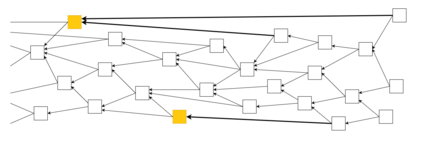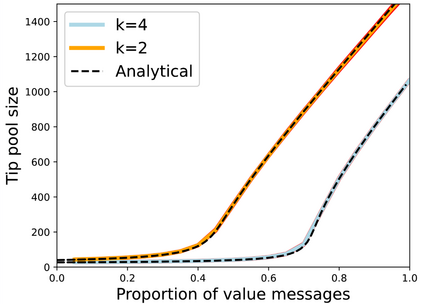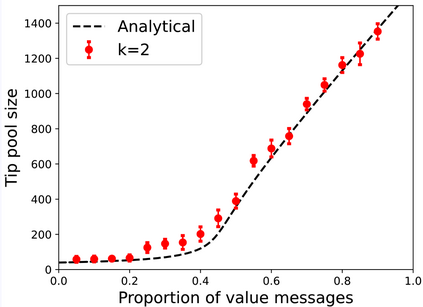In distributed ledger technologies (DLTs) with a directed acyclic graph (DAG) data structure, a message-issuing node can decide where to append that message and, consequently, how to grow the DAG. This DAG data structure can typically be decomposed into two pools of messages: referenced messages and unreferenced messages (tips). The selection of the parent messages to which a node appends the messages it issues, depends on which messages it considers as tips. However, the exact time that a message enters the tip pool of a node depends on the delay of that message. In previous works, it was considered that messages have the same or similar delay; however, this generally may not be the case. We introduce the concept of classes of delays, where messages belonging to a certain class have a specific delay, and where these classes coexist in the DAG. We provide a general model that predicts the tip pool size for any finite number of different classes. This categorisation and model is applied to the first iteration of the IOTA 2.0 protocol (a.k.a. Coordicide), where two distinct classes, namely value and data messages, coexist. We show that the tip pool size depends strongly on the dominating class that is present. Finally, we provide a methodology for controlling the tip pool size by dynamically adjusting the number of references a message creates.
翻译:在分布式分类账技术(DLTs)中,一个带有定向循环图(DAG)数据结构的电文发布节点可以决定该电文的附加地点,并因此决定如何发展DAG。这个DAG数据结构通常可以分解成两种电文库:引用的信息和未参考的信息(提示)。选择一个节点附加信息的父母电文,取决于它所发布的信息,取决于它所认为的提示。但是,一个电文进入节点提示库的确切时间取决于该电文的延迟。在以往的工程中,认为信息有相同或类似的延迟;然而,一般情况下可能不是这样。我们引入了延迟类别的概念,属于某一类的信息有特定的延迟,而这些类别在DAG中同时存在。我们提供了一个一般模型,用来预测它所发布的信息的提示库大小,用于不同类别的任何有限数量。这个分类和模型应用到IOTA 2.0 协议(a.k.a.co. Coordide)的首个代代代代代代代号。在其中,两个不同的类中,我们最终将显示一个排序的排序的缩略图。









